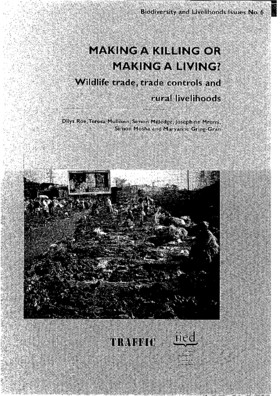Making a Killing or Making a Living: Wildlife trade, trade controls, and rural livelihoods

Can trade controls and the resulting changes in the wildlife trade have a negative impact on the livelihoods of those who earn an income from wildlife harvests, and specifically the rural poor? Some argue that not only do such controls reduce actual or potential economic benefits from wildlife products, but they also have little positive and sometimes even a negative impact on conservation. Research examining the impacts of trade controls and specifically CITES has, to date, focused primarily on the effectiveness of these controls in reducing the threat to species posed by international trade. Although the rhetoric surrounding the need to secure basic benefits for people living close to wildlife has grown since the early 1990s, far less research attention has been given to the impacts on livelihoods or national economies of conservation-motivated trade controls such as those required under CITES. This study is intended to be a first step to address that knowledge gap.
Cite this publication
Available at https://www.iied.org/9156iied